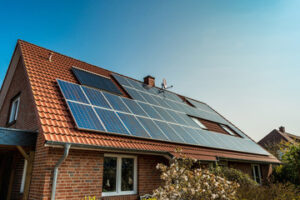Therapeutic massage is the manipulation of soft tissue to reduce discomfort, stress and anxiety. Therapeutic massage also stimulates the skin, which encourages a healthy glow and helps to maintain flexibility and mobility.

Tulsa Massage is normally performed on a specialized padded table and require individuals to undress. If you have spinal cord or brain injury, it is important to find a therapist with experience treating people with these conditions.
Many athletes and health professionals have long contended that massage feels good, reduces pain and helps muscles recover. Now, a team of researchers has discovered why it works so well. Vigorous exercise causes tiny tears in muscle fibres, which triggers an immune reaction — inflammation — as the body gets to work repairing the damaged cells. A massage increases the elasticity of these tissues by raising their temperature and encouraging increased blood flow to the area. This increases the amount of oxygen, water and nutrients that reach the tissues and promotes healthy tissue growth.
The increased blood flow also breaks down adhesions that can occur in the injured muscles. These adhesions restrict movement, decrease the ability to use the muscles and can even prevent them from absorbing oxygen, water and nutrients needed for proper function. When the adhesions are broken down, it allows the muscles to heal and maintain their health.
A massage stimulates the parasympathetic nervous system, which is responsible for the rest and relaxation response. Physical touch triggers this response by slowing the heart rate and lowering blood pressure, and it also releases feel-good brain chemicals. These changes put your body in a more relaxed state, which can help ease the soreness and stiffness associated with exercising or working hard.
In addition, a massage can help improve the flexibility of muscles and joints. Tight muscles are a common cause of back and neck pain. Massage can increase the elasticity of muscles and joints by increasing their temperature and reducing tightness, which can lead to decreased tension and improved range of motion. The enveloping connective tissue that surrounds muscles, called fascia, can also become more flexible after massage. Fascia acts as a second skin, and it is often tight due to poor posture or injury. Massage can help relax these tight fascia layers, which leads to better muscle flexibility and reduced pain.
Maintaining healthy muscles is important especially during training programmes. High-intensity workouts can require a lot of energy and strength from the muscles, which can lead to fatigue, muscle weakness and even injury if a person’s muscle health is low. A massage can help a person maintain healthy muscles by removing metabolic wastes and breaking down adhesions.
Relieves Pain
For many people, massage is more than just a pleasant experience; it relieves pain and improves function. Pain is a very real part of daily living; it can affect a person physically, emotionally and psychologically. The body’s natural reaction to pain is stress, which exacerbates the condition and causes a vicious cycle of increased pain and decreased function. Therapeutic massage decreases the levels of cortisol, the primary stress hormone, and increases serotonin, which promotes feelings of relaxation and well-being.
Massage reduces pain by interrupting the painful messages sent to the brain from nerves in the skin and muscles. It also stimulates the release of endorphins, which are the body’s natural painkillers. Massage also stimulates blood circulation, which helps to transport oxygen and nutrients throughout the body, thereby decreasing inflammation and speeding up the healing process.
During massage, the muscles and tendons relax, and the joints move more easily. This helps to correct the misalignments that can cause stiffness and discomfort, as well as improving the flow of lymph, which flushes away toxins. Massage has a positive impact on organs, too, as they share neurological pain pathways with the muscles, bones and nerves. In addition, the pressure and vibration applied during massage help to relieve tense muscle tissue.
A study at a hospital inpatient unit found that massage significantly reduced the intensity of pain and anxiety. The participants received one or more massage sessions during their hospital stay, and pain and anxiety were measured using a visual analog scale before and after massage.
Many different types of massage techniques are used to reduce and manage pain, including swedish massage, deep tissue massage, trigger point therapy and myofascial release. Massage also enhances the effectiveness of medications by increasing the absorption and potency of painkillers. For example, morphine and other opioids are often used to treat chronic pain. However, they carry serious risks of addiction, abuse and overdose, and are not a good choice for long-term use. Massage is a safe alternative that has been shown to be effective in reducing and managing pain, without any of the side effects associated with prescription medication.
Increases Blood Circulation
Enhanced blood circulation is one of the most commonly promoted positive effects of massage therapy. This increase in blood flow helps bring oxygen and nutrients to muscles and tissue, aids in waste removal, and reduces fatigue and aches created by the accumulation of lactic acid.
While research into the effect of massage on blood circulation has been inconclusive, most studies do report a positive result. Some of the conflicting results are due to differences in measuring techniques, but there is a general agreement that massage does lead to improved blood circulation.
This improvement is partially due to the mechanical pressure applied during a massage. The pressure applied to muscle and tissue causes the widening of blood vessels, a process called vasodilation. This decreases vascular resistance and increases blood flow, which in turn improves the delivery of oxygen and nutrients to tissues and muscles.
It is also thought that the rhythmic pressure applied during massage promotes capillarisation. This is the growth of new blood vessels in tissues, which can further enhance nutrient transfer and waste removal. This is an important part of maintaining healthy tissue structure and preventing disease.
The most well-documented effect of massage on blood circulation is related to venous and lymphatic circulation. Both of these circulation systems are dependent on the “muscular pump”, which is a series of muscle contractions that physically compresses venous and lymphatic vessels, causing a mechanical flow back toward the heart. This is a similar mechanism to that used during a brisk walk, which is why many people associate a brisk walk with increased energy and good health.
Some studies have reported that a brisk walk following a 10-minute massage of the calf muscles, which were measured using laser Doppler flowmetry, showed that both venous and lymphatic circulation was improved. However, a similar study of the neck and shoulder muscles did not show this improvement in circulation.
It is important to note that most studies that measure circulation do so in the skin, which is not the same as muscle tissue. While the studies that measure skin temperature do show a rise after rubbing, this is unlikely to relate directly to changes in muscle blood flow.
Improves Sleep
Sleep is vital for health, but many people struggle with insomnia or other sleep disorders. These disorders can have a profound effect on mood and overall wellbeing, especially in older adults. Massage can alleviate some of the symptoms that may contribute to sleep difficulties, such as joint pain and fatigue. In fact, a study published in 2016 found that massage improves the quality of sleep among postmenopausal women who experienced insomnia, joint pain and anxiety.
One of the reasons why massage helps with sleep is because it reduces cortisol, a stress hormone, while stimulating serotonin and dopamine, which promote relaxation and elevate mood. It also relieves fatigue and promotes restful sleep by reducing muscle tension.
Different types of massage techniques have unique benefits for sleep. For example, Swedish massage, which uses friction, gliding strokes and kneading motions, stimulates the skin and the body’s parasympathetic nervous system, causing a “relaxation response.” This is a physical state in which your heart rate slows, blood pressure decreases, the production of stress hormones decreases, and muscles relax.
Another way massage improves sleep is by triggering the production of melatonin, which helps you fall asleep and stay asleep. This is because massage has a direct impact on the chemistry of your body, specifically increasing the production of melatonin and decreasing cortisol.
It is recommended to have a regular massage routine as part of your wellness plan, particularly in the fall when seasonal affective disorder (SAD) or increased stress from back-to-school and work stressors can interfere with sleep. It is also a great idea to include self-massage in your sleep routine, using the technique that is most beneficial for you.
When it comes to incorporating massage into your routine, try to schedule sessions in the evening, before you head to bed. It will help set your body’s circadian rhythm, which can be disrupted by the darkening of the days and the onset of cooler weather. This will also give you time to clear your mind before you lay down for a peaceful night of slumber. Incorporate massage into your life, and you’ll be surprised at how much more refreshed you will feel in the morning!

